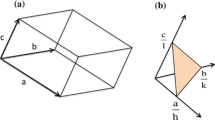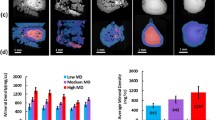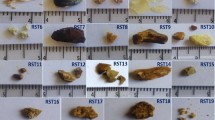Abstract
Numerous treatises have been published on the common components of renal calculi and on the most frequent combinations of those crystalline materials in multicomponent stones. These studies have utilized the techniques of optical microscopy, electron microscopy, chemical analysis, and x-ray crystallography. The most common stone components are summarized in Table I. Renal calculi are frequently composed of more than one crystalline component, and, as shown in Table II, there is a higher degree of incidence for some admixtures than others1. When these multicomponent stones are sectioned, the different crystalline entities are seen to lie in distinct layers, and each distinct layer is, in general, homogenous in crystalline composition.
Access this chapter
Tax calculation will be finalised at checkout
Purchases are for personal use only
Preview
Unable to display preview. Download preview PDF.
Similar content being viewed by others
References
B. T. Murphy and L. N. Pyrah, Br. J. Urol. 34:129 (1962).
G. Mandel and N. Mandel, Am. Crystal. Assoc. Mtg. (abstract) (1979).
S. Deganelo, private communication (1979).
C. Sterling, Acta. Crystallographica 18:917 (1965).
H. Ringertz, Acta. Crystallographica 20:397 (1966).
M. I. Kay, R. A. Young, and A. S. Posner, Nature 204:1050 (1964).
J. L. Meyer, J. H. Bergert, and L. H. Smith, Clin. Sci. Mol. Med. 49:369 (1975).
J. L. Meyer, J. H. Bergert, and L. H. Smith, Invest. Urol. 14:115 (1976).
J. L. Meyer, J. H. Bergert, and L. H. Smith, Clin. Sci. Mol. Med. 52:143 (1977).
K. Lonsdale, Nature 217:56 (1968).
B. Dickens and L. W. Schroeder, NBS Technical Note 893 (1976).
Author information
Authors and Affiliations
Editor information
Editors and Affiliations
Rights and permissions
Copyright information
© 1981 Springer Science+Business Media New York
About this chapter
Cite this chapter
Mandel, N.S., Mandel, G.S. (1981). Epitaxis between Stone-Forming Crystals at the Atomic Level. In: Smith, L.H., Robertson, W.G., Finlayson, B. (eds) Urolithiasis. Springer, Boston, MA. https://doi.org/10.1007/978-1-4684-8977-4_79
Download citation
DOI: https://doi.org/10.1007/978-1-4684-8977-4_79
Publisher Name: Springer, Boston, MA
Print ISBN: 978-1-4684-8979-8
Online ISBN: 978-1-4684-8977-4
eBook Packages: Springer Book Archive




